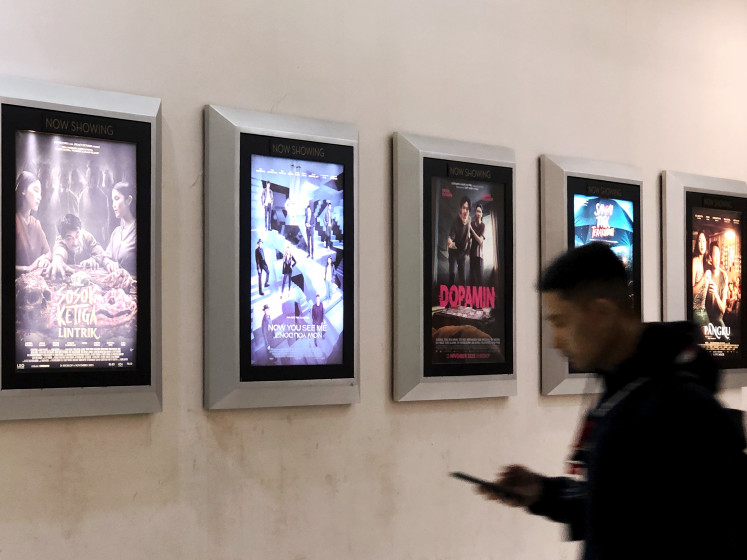Popular Reads
Top Results
Can't find what you're looking for?
View all search resultsPopular Reads
Top Results
Can't find what you're looking for?
View all search resultsNews Analysis: US and ASEAN: Partners rather than allies
As the US and ASEAN forge closer ties based on growing mutual strategic interests, the meeting of their leaders in New York last week indicated that they are likely to proceed as partners rather than becoming allies
Change text size
Gift Premium Articles
to Anyone
A
s the US and ASEAN forge closer ties based on growing mutual strategic interests, the meeting of their leaders in New York last week indicated that they are likely to proceed as partners rather than becoming allies.
Political and security issues, which usually underpin alliances between nations, are part of this evolving relationship, but they take a backseat to economic and soft power issues, suggesting that a partnership is in the making rather than an alliance, similar to those the US has forged with Japan and South Korea.
The rise of China as a major global power dictates that the US and ASEAN have mutual strategic interests in deepening and intensifying their relationship. The two sides however do not necessarily see eye-to-eye on how to deal with the potential threat of China, and this somehow defines the nature of their relationship.
The New York summit avoided making any direct references to disputes that China has had with some ASEAN member countries because of overlapping territorial claims in the South China Sea. An earlier draft of the communique, leaked to and reported by The Associated Press, had the leaders opposing the use of force in disputed waters.
This reference was struck by the time the statement reached US President Barack Obama and his ASEAN guests. The final statement that came out of the Friday summit made a mild call for the preservation of security in international sea lanes and for peaceful resolutions of any conflicts.
“We took care of that at the senior officials meeting,” one ASEAN diplomat said with regard to the absence of a mention of the South China Sea disputes in the statement.
This is a significant shift from the position that US Secretary of State Hillary Rodham Clinton took during a meeting with her ASEAN counterparts in Hanoi in July, when she virtually waded the US into the South China Sea disputes, and staked US interests in the region by offering Washington’s mediation assistance. Beijing responded by telling the US to stay away from the issue.
A joint statement critical of China would have given the impression that leaders meeting in New York were ganging up on Beijing, in which case the US-ASEAN relationship would be headed towards an alliance. Instead, the statement focused on soft power issues as the chief means of building ties.
Following the suggestion of Vice President Boediono, who represented Indonesia in New York, the leaders agreed to focus on a short list of priorities for the US and ASEAN to work on. The three areas chosen were education, trade and forestry.
More than anything else, the two-hour luncheon meeting was symbolic of the US commitment to engage ASEAN countries even more. Obama took the initiative to call for the meeting on the sidelines of the UN General Assembly after attending the first ever ASEAN-US summit in Singapore in November 2009.
The summit “institutionalizes American engagement in ASEAN on equal footing with other major partners such as China, India and others,” wrote Ernie Bower, the Southeast Asian specialist in the Washington-based Center for Strategic and International Studies.
Indonesia, which will chair ASEAN in 2011, is almost certain to continue this tradition and hold the third summit.
Besides the direct benefits from the economic relations that the United States gains from its ties with Southeast Asian countries, ASEAN is also helping Washington gain admission to the East Asia Summit (EAS), currently an annual event involving leaders from the 10 ASEAN countries and China, Japan, South Korea, India, Australia and New Zealand.
The EAS, which is becoming the chosen mechanism to prepare for the emergence of an Asia-Pacific community, is largely driven by ASEAN, which decides who participates and who does not. At this year’s meeting, the summit will likely decide on admitting the United States along with Russia. Clinton will return to Hanoi next month and Obama has already committed to making his debut at the EAS, to be held in Jakarta, in 2011.
ASEAN welcomes the increasing engagement of the United States in Southeast Asia and in the larger East Asian region, but it wants to make sure that Washington plays by the same rules as others. Clinton signed the Instrument of Accession to the Treaty of Amity and Cooperation in July, which binds the US to the promotion of peace and stability as a precondition to joining the EAS.
ASEAN may not be a US ally in the way Japan and Korea are, but it is surely becoming an indispensable partner for strategic US interests in Asia.
An alliance with the US would invoke memories of the Southeast Asian Treaty Organization (SEATO), set up in 1955 to align the US, other Western powers, Thailand and the Philippines to counter communist influence in the region, which was then split by ideological differences.
The differences between partners and allies may not be mere semantics, for one suggests warmth and the other, more business-like relationships. When allies meet, presumably they drink beer. When partners meet, they drink coffee.
ASEAN and the US should stick to coffee. Next time their leaders meet, they can always retreat to Starbucks.










